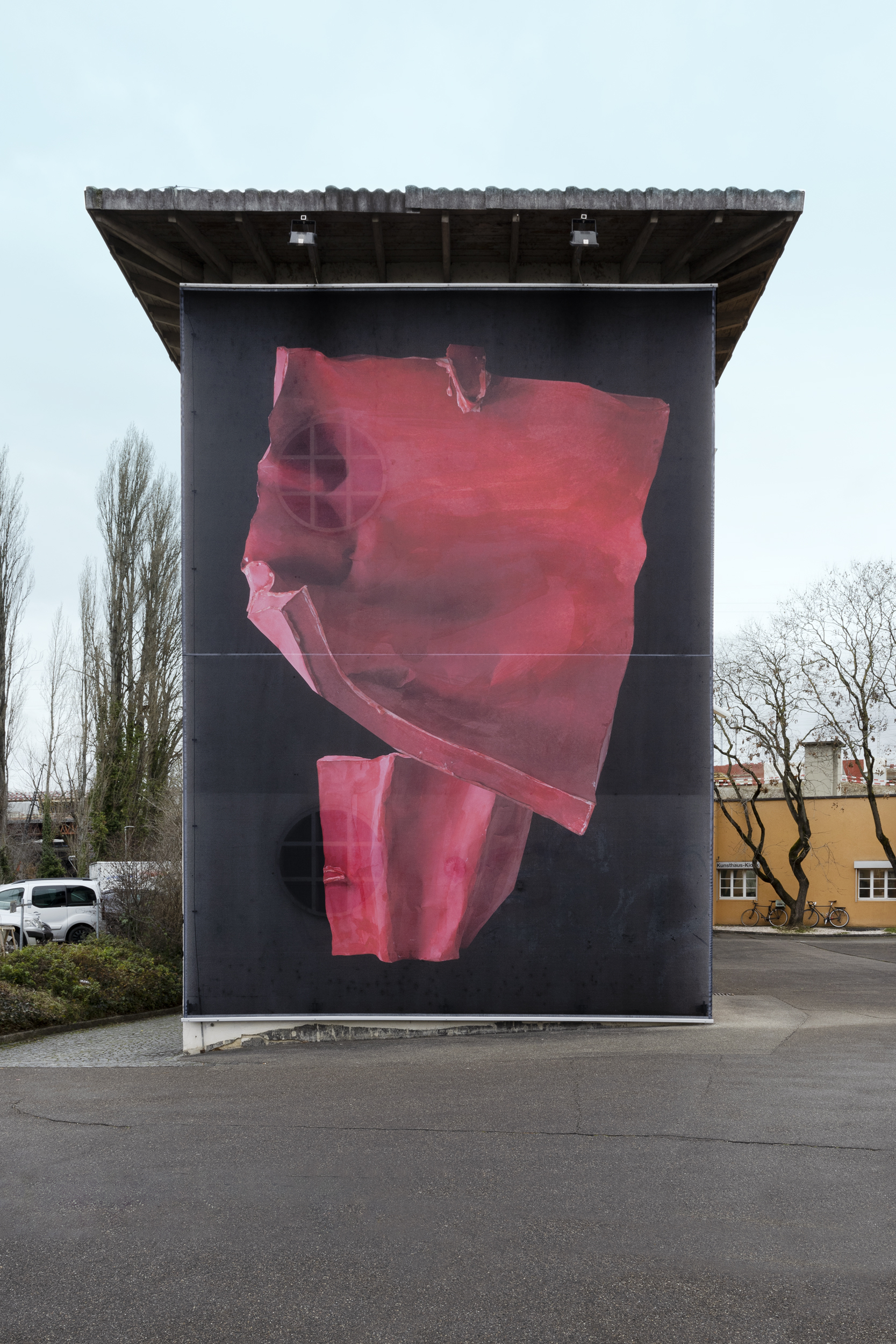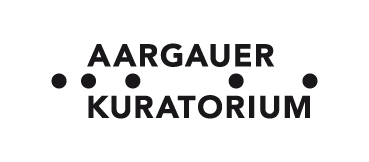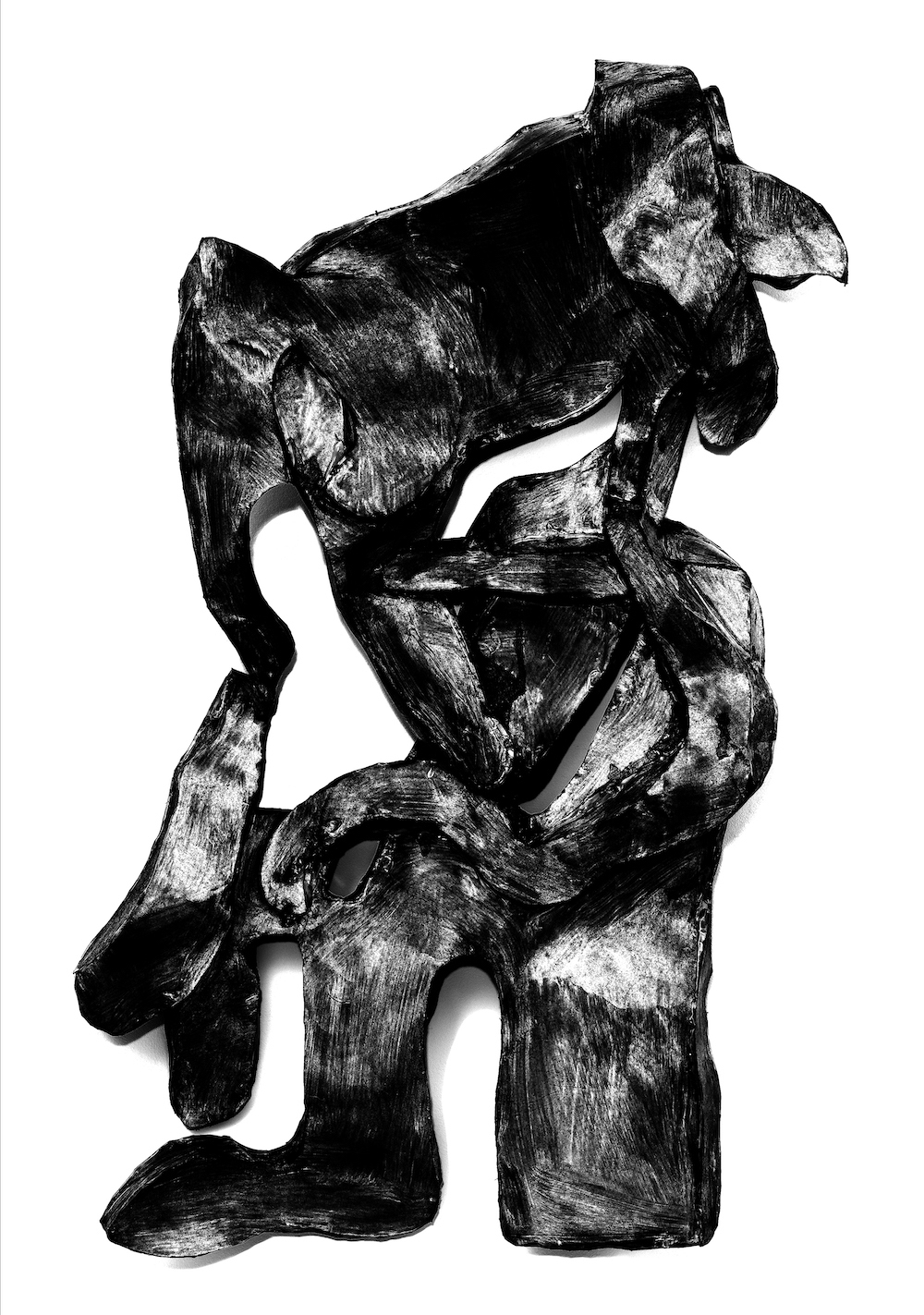Simone Holliger
Annual Exterior Project 2023
3.2.2023 —
8.1.2024

Selected press coverage
Neues Radio Seefunk, 6. Februar 2023
Badische Zeitung, 15. Februar 2023
Project partners

Ernst und Olga Gubler-Hablützel Stiftung
Stiftung Erna und Curt Burgauer
For several years now, award-winning, internationally active artist Simone Holliger has worked with carefully chosen materials. Through an experimental, process based approach, she creates sculptures that are typically several meters in height and width. They grow in and together with the space surrounding them. Voluminous and compact and at the same time permeable and light, the objects play with our visual habits and invite us to consider the solid and the empty, the recto and the verso, the visible and the hidden.
Born in 1986 and living and working in the Basel area, the artist also thinks about the space, builds and shapes it—its texture and tonal value, as well as the smells, temperatures, and people that inhabit it. At Kunsthaus Baselland, Simone Holliger will make her largest institutional presentation in Basel to date. Concurrently with her solo exhibition, she will also design the Annual Exterior Project 2023.
The title speaks for itself: come to hand. It sounds like allowing something to come to you, being open to what a given situation asks for, what the material enables, what you are willing to let happen. But also like a form of being empowered, taking something in hand, listening to your intuition, and so breaking into new possibilities.
Considering the opulence of many of the several-meter-high sculptures and reliefs that Simone Holliger has created in recent years, we might be inclined to think of the process behind her works as being quite different from what it actually is. Her spatial bodies, usually executed in situ and made of stiff paper attached with hot glue, are astonishing in their expansive size and presence. Also engaging is the selection and intensity of colors, which she usually determines associatively when making the work and applies with gestural monochrome motions. Faced with so much vigor, which Simone Holliger’s works never fail to emanate, it is hard to imagine that they were not planned en détailbeforehand—or that they didn’t have to be planned at all. And yet most of them are actually created on the spot, over the course of powerful, daring days and weeks leading up to each opening.
“Always when I’m at the space,” Holliger says, “I ask myself where I should start. At which juncture can I intervene in the existing configuration and thus use available structures, surfaces, and points? Where can I insert volumes where there are voids within the existing structure, and how can this change the proportions of the existing volumes?”
For Simone Holliger, every sculpture, every work, every project, and consequently every exhibition starts with the venue itself. Not only with its architectural and material properties, but also with the people who shape it and make it into what it is. The many preliminary visits that Holliger devotes to each of her exhibition spaces are therefore not only concerned with wall and ceiling heights. Rather, they focus on starting a dialogue and listening—until an idea becomes meaningful and comes to hand in the truest sense of the word. It almost seems as if this hand is temporarily incorporated into each structure.
It is thus fitting to expand our writing approach when it comes to Simone Holliger and her works. To move away from just wanting to compare them with what they might remind you of. To refrain from relating her practice to those of (mostly male) fellow artists from different generations who, instead of working with paper like Holliger, have shaped, squeezed, or pressed materials including steel, stone, and marble into a specific form—something that was often followed by vigorous pictorial documentation. There should not be any comparison with narratives either; even if associations are amply inspired in their juxtaposition with the sculptures, sculptural interventions, spatial reliefs, and spatial bodies, they become allegorical in view of the often amorphous forms. We may be reminded of such and such a thing, form, art history reference, or feeling. But fortunately, any attempt at comparison fails in the end.
Even though at first glance Holliger’s works deviate from the human scale due to their enormous size, they are actually inspired by it. And not just by such proportions, but also by humans in their relationships and interdependencies—by their being-in-the-world. Simone Holliger’s resolute and equally radical step to depart from what had been familiar thus far and break into a new realm for her exhibition at Kunsthaus Baselland is therefore a fundamentally important and also courageous one. This work can almost be regarded as the substrate of her previous output. A space, a work; a shimmering membrane that redefines space by means of a new materiality—through light, sound, and color. Nothing detracts from the viewer’s coming into contact with this second skin. We almost have the impression that she is now turning sculpture inside out, opening it up towards the surrounding space, so that as viewers we can become one with the work. “I am interested,” Holliger says, “in making structures disappear. The complexity of an existing ceiling, for instance, which is determined by technical and structural factors. This makes it possible to bring in a new complexity that is rather soft, sensual, haptic, malleable, and at the same time permeable and compact.”
This artistic commitment not to apply yesterday’s certainties to today, but to act in response to the present circumstances and the opportunities they offer, is precisely the skill that seems to be essential for our being-in-the-world—today, here, and now. As sustainability scientist Maja Göpel recently expressed, it is a known fact that our current worldview is largely informed by the things we learned and were told from the past. As such, it is our experiences in this world that determine which stories we consider right, wrong, convenient, risky, convincing, or fallacious; but also the narratives we choose to invoke for any given experience, and draw upon for comparison. The freedom to shape the future thus always seems to be predetermined and prestructured. Our view of the world helps to determine its current and future state, both positively and negatively. And it is precisely in this way that we can understand the world, approach it, and ultimately shape it.
It is therefore extremely rewarding to adopt Simone Holliger’s artistic strategy in a twofold way - both by seeing things for yourself and by cultivating a deep understanding of how we think, act, and create in the first place. If we want to free ourselves from—as the philosopher Antonin Artaud once so aptly put it—a falsely rehearsed everyday life, it is crucial to focus on change. The recent and current years of crisis can offer this very opportunity: to put aside the opulence and abundance of everyday life, regardless of how comfortably we have settled into it. Instead of a calendar of exhaustion, we should choose to regularly step back from things and really perceive them. This will allow us to question our being-in-the-world from a different perspective. The future is not a fixed state that comes to us, but rather an approach that we can shape for ourselves.
Simone Holliger (b. 1986) lives and works in Basel. She studied in Lucerne and Geneva and graduated with a Master of Fine Arts from HEAD in 2014. Simone Holliger regularly creates exhibitions in institutional contexts as well as independent art spaces. Recent exhibition venues include the Musée des beaux-arts de La Chaux-de-Fonds and BF15 in Lyon. Her work has won several awards, including most recently the Kulturförderpreis by the Alexander Clavel Foundation (2021) and the Swiss Art Award (2019). She was an artist-in-residence in Berlin (2020), Paris (2016), and Marfa (2015).
